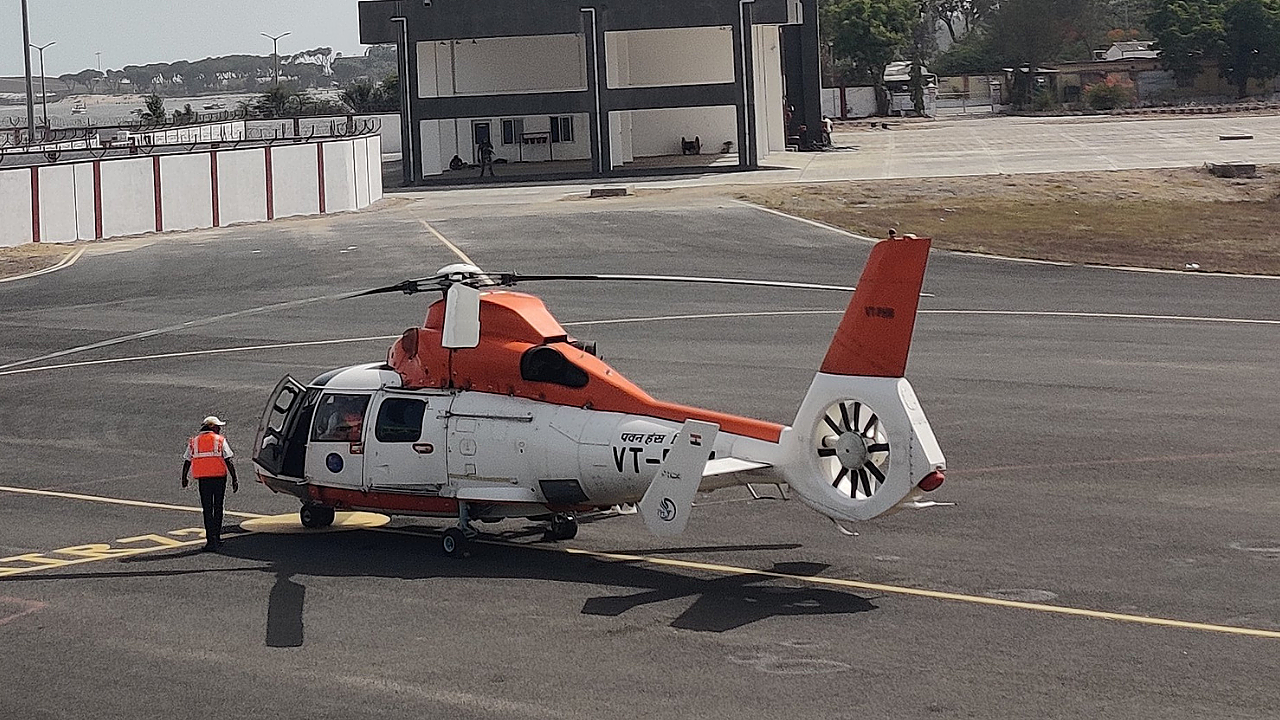
India’s largest helicopter operator, Pawan Hans Limited (PHL) has suffered the unfortunate loss of its newest helicopter, a Sikorsky S-76D (VT PWI), resulting in four fatalities. This is the third fatal crash involving a PHL helicopter since 2015.
The new S-76D went down in inclement weather conditions on June 28 in an emergency ditching (another way of saying emergency landing) while on final approach to the Sagar Kiran oil rig (built-in 1988 by Mazagon Docks Limited) at Mumbai off-shore, which belongs to the Oil and Natural Gas Corporation (ONGC). The helicopter had nine occupants, including two pilots and four ONGC personnel. Both pilots were rescued safely, along with three other occupants.
According to information in an ONGC release, the pilots of the S-76D made an emergency landing in the Arabian Sea around 11:45 AM on June 28, when the helicopter was one nautical mile away from ONGC off-shore rig Sagar Kiran. ONGC vessels near the location were mobilised for search and rescue operation, and one person was rescued by a lifeboat launched from the Sagar Kiran, and four more persons were rescued by ONGC stand-by vessel Malviya-16. The remaining four personnel were unconscious when recovered by navy helicopters and did not respond to treatment at the hospital.
Inauspicious Beginning
The crash of new and modern helicopters such as the S-76D, less than two months after it commenced flights with PHL, is certainly a cause for concern. The new rotorcraft type started operations with PHL in May and was the first of six helicopters leased from aircraft lessor Milestone Aviation Group.
The inaugural flight of the new helicopter, S-76D (VT PWI), took place on May 12 from ONGC’s Juhu Helibase, Mumbai, in the presence of Sanjeev Razdan, CMD, PHL and Pankaj Kumar, Director, Offshore ONGC. PHL had taken delivery of the ill-fated S-76D (VT PWI) in August 2021. It is understood to have taken delivery of a total of five S-76Ds as of date.
Out of the six S-76Ds taken on lease by PHL, two were to be operated exclusively for ONGC under an August 2021 contract valid for a period of five years. The two helicopters were to be used for crew change tasks requiring personnel on the oil rig to be rotated out. PHL provides vital helicopter support for ONGC’s off-shore operations related to 24/7 transport of personnel and vital supplies to support drilling rigs situated in Bombay off-shore platforms. PHL operates to ONGC’s Rigs (mother platforms and drilling rigs) and production platforms (wells) within a radius of 240km from mainland Mumbai.
The remaining four S-76Ds were to be operated by PHL in the Andaman and Nicobar Islands, replacing Airbus Helicopters Dauphin N3s operated by the company. It has been operating helicopters on the islands for nearly three decades. The new helicopters are equipped with a glass cockpit with the latest avionics, such as Enhanced Ground Proximity Warning System (EGPWS). A Traffic Collision Avoidance System (TCAS) and autopilot are standard on the Sikorsky S-76D, powered by Pratt & Whitney Canada PW210S engines and features all-composite, flaw-tolerant main rotor blades. Sikorsky has delivered more than 875 S-76 helicopters worldwide since 1977, and off-shore missions account for 65% of the total flight hours accumulated fleet-wide to date.
Vital Statistics
In addition to being India’s largest helicopter operator, it is also one of the largest helicopter operators in Asia, and the new S-76Ds marked a much-needed infusion of new helicopters into PHL’s fleet. Despite having a total fleet of 42 helicopters, five of its vintage SA365 N ‘Dauphin’ are over 33 years old and non-operational, leaving it with an ageing fleet of 37 helicopters.
PHL’s efforts to induct four new light helicopters and two heavy helicopters have not materialised due to the Government’s decision in 2018 to go in for strategic disinvestment of its entire 51% shareholding in PHL along with transfer of management control. ONGC also decided to offload its entire shareholding of 49% in PHL in 2018. PHL deployed only 28 helicopters to meet its average monthly flying tasks for FY21. The impact of the COVID-19 pandemic was also seen in the reduction of total revenue flying hours in 2020-21 to 14,454 hours compared to 18,271 hours in the previous year.
PHL’s previous helicopter accidents before the latest one occurred in 2015 and 2018, respectively. These accidents featured AS365 N3 Dauphins and were lost with all lives onboard while operating on ONGC duties. Since 1988 PHL helicopters have been involved in over 20 fatal accidents with nearly 100 fatalities. PHL operates seven different helicopter types.
PHL’s fleet of helicopters comprises seven different types; three are Airbus - SA365 N ‘Dauphin’ (17), SA365 N3 ‘Dauphin’ (14) and AS 350 B3 (2) which have an average age of 34, 13 and 11 years respectively. It operates two types of Bell Helicopters – Bell 407 (3) and Bell 206L4 (2), with an average age of 18 and 26 years, respectively. It also operates three Mil Mi-172s from Russian Helicopters, which are 14 years old on average. In addition to these types, PHL operates a single Hindustan Aeronautics-built Dhruv helicopter which is 16 years old.